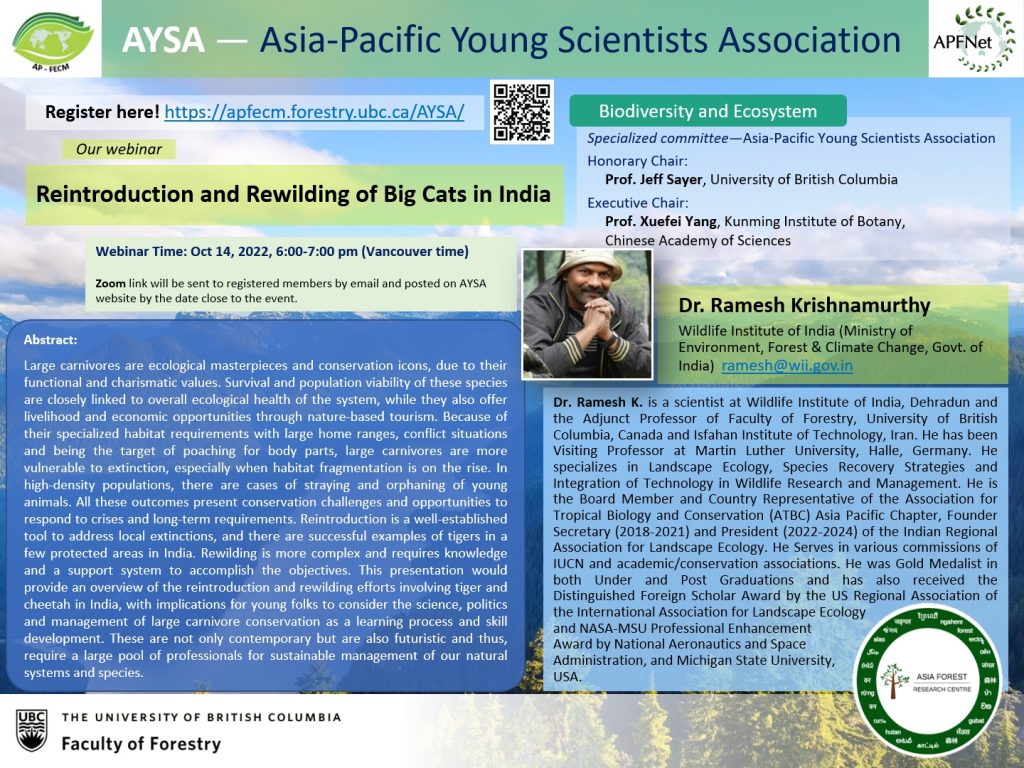Title: Reintroduction and Rewilding of Big Cats in India
Time: Oct 14, 2022, 6:00-7:00 pm (Vancouver, Pacific Time, GMT-7:00)
Watch on YouTube
Dr. Ramesh Krishnamurthy

Dr. Ramesh Krishnamurthy is a scientist at the Wildlife Institute of India, Dehradun, and the Adjunct Professor of Faculty of Forestry, University of British Columbia, Canada and Isfahan Institute of Technology, Iran. He has been Visiting Professor at Martin Luther University, Halle, Germany. He specializes in Landscape Ecology, Species Recovery Strategies and Integration of Technology in Wildlife Research and Management. He is the Board Member and Country Representative of the Association for Tropical Biology and Conservation (ATBC) Asia Pacific Chapter, Founder Secretary (2018-2021) and President (2022-2024) of the Indian Regional Association for Landscape Ecology. He Serves in various commissions of IUCN and academic/conservation associations. He was Gold Medalist in both Under and Post Graduations and has also received the Distinguished Foreign Scholar Award by the US Regional Association of the International Association for Landscape Ecology and NASA-MSU Professional Enhancement Award by National Aeronautics and Space Administration, and Michigan State University, USA.
Abstract
Large carnivores are ecological masterpieces and conservation icons, due to their functional and charismatic values. Survival and population viability of these species are closely linked to overall ecological health of the system, while they also offer livelihood and economic opportunities through nature-based tourism. Because of their specialized habitat requirements with large home ranges, conflict situations and being the target of poaching for body parts, large carnivores are more vulnerable to extinction, especially when habitat fragmentation is on the rise. In high-density populations, there are cases of straying and orphaning of young animals. All these outcomes present conservation challenges and opportunities to respond to crises and long-term requirements. Reintroduction is a well-established tool to address local extinctions, and there are successful examples of tigers in a few protected areas in India. Rewilding is more complex and requires knowledge and a support system to accomplish the objectives. This presentation would provide an overview of the reintroduction and rewilding efforts involving tiger and cheetah in India, with implications for young folks to consider the science, politics and management of large carnivore conservation as a learning process and skill development. These are not only contemporary but are also futuristic and thus, require a large pool of professionals for sustainable management of our natural systems and species.
